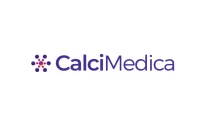WALTHAM, Mass.–(BUSINESS WIRE)– Corindus Vascular Robotics (NYSE American: CVRS), a leading developer of precision vascular robotics, announced it will co-sponsor courses at multiple leading hospitals to educate interventional cardiologists on transradial access techniques and robotic-assisted vascular interventions. The course series entitled “Complex Radial Interventions on Robotic and Manual Platforms” is designed to familiarize participants with the operations and capabilities of robotic-assisted percutaneous coronary interventions (PCI) using the CorPath GRX System and to instruct physicians on the benefits of transradial access and the products available that are specifically designed to support transradial procedures. The course series is co-sponsored by Medtronic.
Hospital partners include WellStar Kennestone Hospital in Marietta, Georgia and The Heart Hospital Baylor Plano in Plano, Texas. Initial courses are scheduled for March 2018 with plans to expand the course program in the future.
“This first-of-its-kind course series will be a highly effective tool for educating forward-looking physicians interested in expanding their transradial skills and adopting robotics into their practice,” stated Arthur Reitman, M.D., Medical Director of the Catheterization Lab at WellStar Kennestone Hospital. “Participants will leave the program understanding the complexity of procedures that can be completed with this method and how it can positively impact their patients and institutions.”
Transradial access is associated with reduced incidence of procedural complications including major bleeding and vascular complications, reduced hospitalization, and an improved patient experience.1,2Specifically, left transradial access has additional benefits for certain patients including those who have previously undergone coronary artery bypass grafting (CABG) surgery and those who are right-hand dominant.3,4 Combining robotics with transradial access can increase the precision of stent positioning which may improve patient outcomes.5,6
“We are excited to work with leading hospitals on educational initiatives that put into practice the benefits of robotic-assisted transradial procedures,” said Mark Toland, President and Chief Executive Officer of Corindus. “This synergy of technology and best-in-class care is transforming outcomes for cardiovascular patients while maximizing the benefits of this value-based care model for hospitals.”
About Corindus Vascular Robotics
Corindus Vascular Robotics, Inc. is a global technology leader in robotic-assisted vascular interventions. The company’s CorPath® System is the first FDA-cleared medical device to bring robotic precision to percutaneous coronary interventions. During the procedure, the interventional cardiologist sits at a radiation-shielded workstation to advance guide catheters, stents, and guidewires with millimeter-by-millimeter precision. The workstation allows the physician greater control and the freedom from wearing heavy lead protective equipment that causes musculoskeletal injuries. CorPath GRX is the second generation robotic-assisted PCI technology offering enhancements to the platform by adding important key upgrades that increase precision, improve workflow, and extend the capabilities and range of procedures that can be performed robotically. With the CorPath System, Corindus Vascular Robotics brings robotic precision to interventional procedures to help optimize clinical outcomes and minimize the costs associated with complications of improper stent placement during manual procedures. Corindus stands behind its product with its unique $1,000 hospital credit “One Stent Program.” For additional information, visit www.corindus.com, and follow @CorindusInc.
Forward Looking Statements
Statements made in this release that are not statements of historical or current facts are “forward-looking statements” within the meaning of the Private Securities Litigation Reform Act of 1995. Forward-looking statements may involve known and unknown risks, uncertainties and other factors that may cause the actual results, performance or achievements of Corindus to be materially different from historical results or from any future results or projections expressed or implied by such forward-looking statements. Accordingly, readers should not place undue reliance on any forward looking statements. In addition to statements that explicitly describe such risks and uncertainties, readers are urged to consider statements in the conditional or future tenses or that includes terms such as “believes,” “belief,” “expects,” “estimates,” “intends,” “anticipates” or “plans” to be uncertain and forward-looking. Forward-looking statements may include comments as to Corindus’ beliefs and expectations as to future events and trends affecting its business and are necessarily subject to uncertainties, many of which are outside Corindus’ control. Examples of such statements include statements that:
- Corindus will co-sponsor courses with Medtronic designed to familiarize participants with the operations and capabilities of robotic-assisted PCI using the CorPath GRX System and to instruct physicians on the benefits of transradial access and the products available that are specifically designed to support transradial procedures;
- the first-of-its-kind course series will be a highly effective tool for educating forward-looking physicians interested in expanding their transradial skills and adopting robotics into their practice, and who will leave the program understanding the complexity of procedures that can be completed with this method and how it can positively impact their patients and institutions; and
- Corindus believes that this synergy of technology and best-in-class care is transforming outcomes for cardiovascular patients while maximizing the benefits of this value-based care model for hospitals.
Important factors that could cause actual results to differ materially from those indicated by such forward-looking statements are described in the sections titled “Risk Factors” in the company’s filings with the Securities and Exchange Commission, including its most recent Annual Report on Form 10-K and Quarterly Reports on Form 10-Q, as well as reports on Form 8-K, including, but not limited to the following: the rate of adoption of our CorPath System and the rate of use of our cassettes; risks associated with market acceptance, including pricing and reimbursement; our ability to enforce our intellectual property rights; our need for additional funds to support our operations; our ability to manage expenses and cash flow; factors relating to engineering, regulatory, manufacturing, sales and customer service challenges; potential safety and regulatory issues that could slow or suspend our sales; and the effect of credit, financial and economic conditions on capital spending by our potential customers. Forward looking statements speak only as of the date they are made. Corindus undertakes no obligation to publicly update or revise any forward-looking statements, whether as a result of new information, future events or otherwise that occur after that date. More information is available on Corindus’ website at http://www.corindus.com.
________________________
- Ferrante G, et al. Radial versus Femoral Access for Coronary Interventions Across the Entire Spectrum of Patients With Coronary Artery Disease A Meta-Analysis of Randomized Trials. JACC Cardiovascular Interventions. Jul 2016, 9 (14) 1419-1434; DOI: 10.1016/j.jcin.2016.04.014
- Bertrand O, et al. Comparison of transradial and femoral approaches for percutaneous coronary interventions: a systematic review and hierarchical Bayesian meta-analysis. Am. Heart J. 2012 April;163 (4) 632-48.
- Pasley T, et al. Left Radial Versus Femoral Access for Coronary Angiography in Post-Coronary Artery Bypass Graft Surgery Patients. J Invasive Cardiol. 2016 Mar;28(3):81-4.5
- Sciahbasi A. Transradial approach (left vs right) and procedural times during percutaneous coronary procedures: TALENT study. Am Heart J. 2011 Jan;161(1):172-9. doi: 10.1016/j.ahj.2010.10.003.
- Campbell PT, et al. The Impact of Precise Robotic Lesion Length Measurement on Stent Length Selection: Ramification for stent savings. Cardiovasc Revasc Med. 2015; piii:S1553-8389.
- Finn AV, Kolodgie FD, Harned J, et. al. Differential response of delayed healing and persistent inflammation at sites of overlapping sirolimus- or paclitaxel-eluting stents. Circulation. 2005;112:270-278.
View source version on businesswire.com:http://www.businesswire.com/news/home/20180123006555/en/
Contacts
Corindus Vascular Robotics, Inc.
Media Contact:
Kate Stanton, 508-653-3335 ext. 200
kate.stanton@corindus.com
or
Investor Contact:
Lynn Pieper Lewis, 415-937-5402
ir@corindus.com
Source: Corindus Vascular Robotics, Inc.





